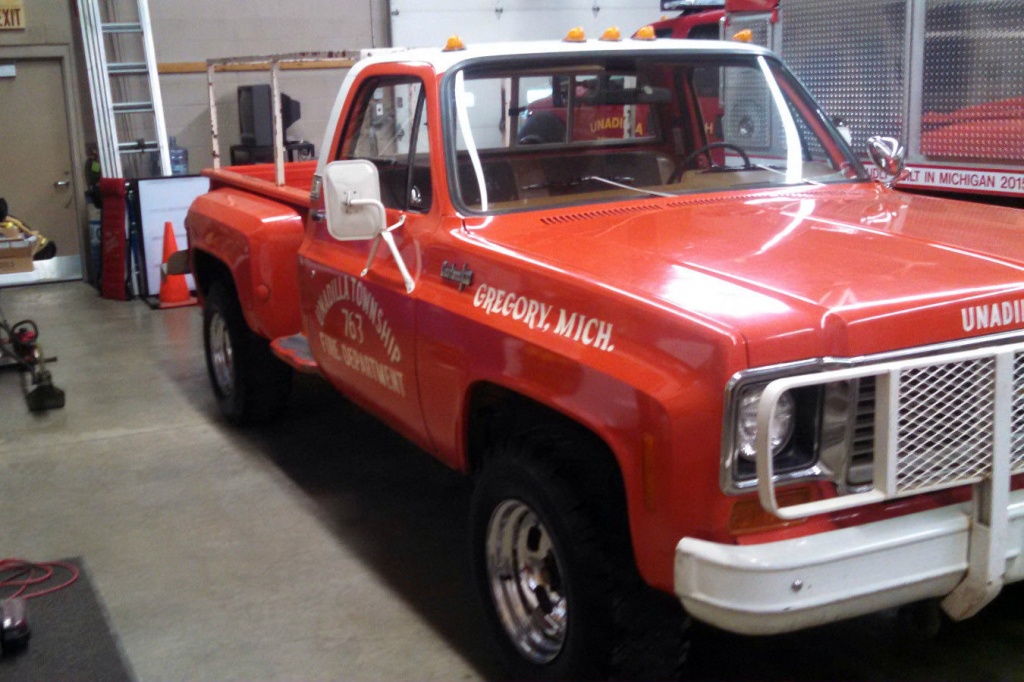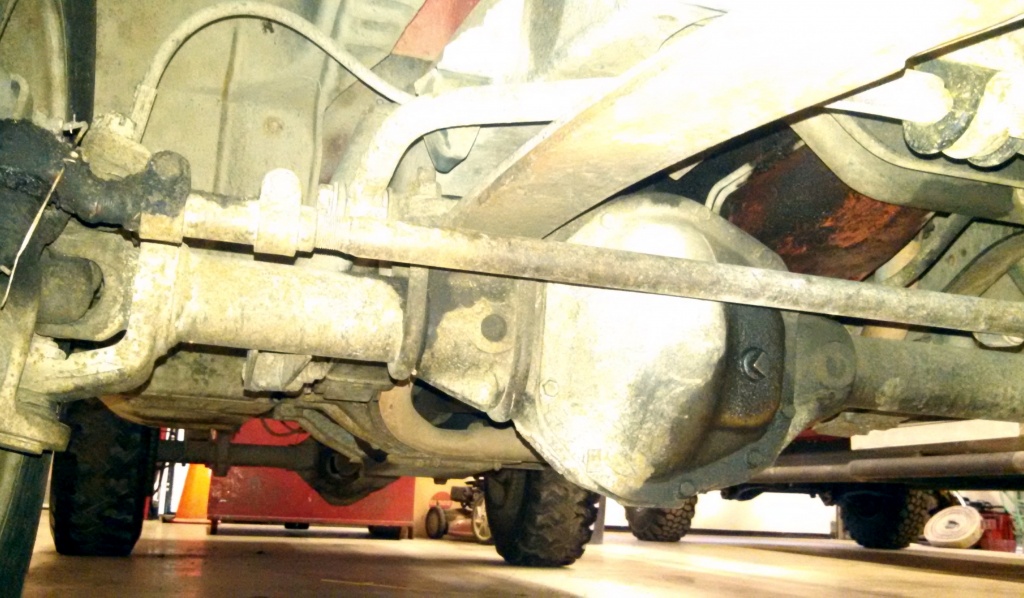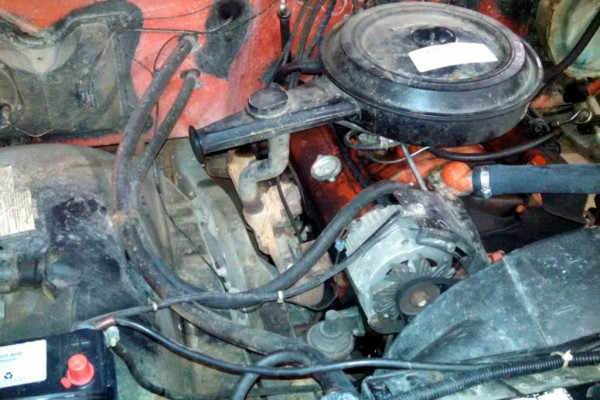We recently featured a Chevy C20, which you can find here, and we just had Todd C contact us about buying advice for this truck. He is wanting to join the ranks of classic car ownership and decided this truck looked like an awesome place to start, but since he is new at this, he wasn’t sure what specific things to look for. I’ll admit, I’m not an expert (especially not on these C20s), so I was only able to give him the most basic of buying advice. Since many of you are far more knowledgeable than I am, I thought it would be good to turn to you guys for advice!
From Todd – I contacted the seller about the 1974 Chevy c20 that is located in Gregory Michigan and was previously listed on your submissions. I am very new to this and was looking to buy a classic truck to start. I see the current listing is at $4550. I have obtained pics of the undercarriage, engine compartment and truck bed. I realize there maybe rust inside the doors but the truck appears in good shape. Could you give me your opinion based on the pics submitted if there are issues I’m not seeing. I’m afraid I’m ignorant and would appreciate any help you can provide.
As you can see, Todd is in need of recommendations for things to look for. So what are some of the Chevy C20s common weaknesses and issues. Do you see anything here that would deter you from buying this truck or would you give Todd your stamp of approval? Oh and if you happen to live near this truck, would you be willing to go take a look at it for Todd? I want to wish Todd the best of luck with this auction and I hope he gets the advice he is looking for!








Front and rear corners of all fenders, rear bottom corners of the doors, rear bottom corners of the cab are notorious for rust out. I have just received a 1975 Chevy fleet side short bed and it has all the rust outs as well as the front bottom of the hood!
Generally speaking, you can’t go wrong with a fire or municipal truck. As someone stated before, these units are subjected to a lot of idling, but maintenance is always a top priority. Mechanically, there should be nothing wrong, and I recommend checking hoses and other such 40 year old parts and a valve job may be in order, but other than that, these are non-existent in the mid-west, and it’s amazing to see one in this condition. I say, go for it!!
This truck has me a little stumped as a 4 wheel drive should be a K series not C. And 20 designates 3/4 ton while 1 ton is 30.
The rear axle is a 14 bolt full float axle very strong which would be found on a one ton (30 series).
I’d be concerned that it might have a NP203 transfer case which is full time 4WD. Mechanically reliable but bye bye gas mileage.
Though if it is truly a one ton truck it will be a NP205 transfer case which is bombproof. It would also then have a Dana 60 front axle which would make the driveline worth more than the current bid to an off roader.
If it IS a 1 Ton with the Dana 60 front, check the Kingpins as they are costly to repair.
Otherwise mechanically these are reliable and cheap to repair with unlimited access to parts including all trim, seals, body and interior. LMC is a great resource as is nearly any wrecking yard.
Nice to see such knowledgable people chiming in.
Rust, rust, rust. 1973 and 1974 GM trucks were infamous for rust problems. GM replaced many pickup beds under warranty for rust and I believe the warranty period back then was only 3 years, so you know it was a horrible problem. I owned a ’74 and the rust repairs never ended. If the truck has been garaged and you intend to keep it garaged and/or live in a dry climate it could be OK, but be prepared for ongoing rust problems.
My 1st vehicle was a ’74 C-10, and I had a ’76 C-20. Wheel wells, doors, and the cab corners were the bad spots. Besides that, they both ran forever. When the 74’s 350 went bad, I got a 454 from a local scrap yard that lined right up. It was a beast after that. Good buy, and they came down quite a bit from the asking price. If you don’t get it, I just might.
well, i think for 41 years old its a beautiful old truck …so it has some rust …big deal . if i had room for it i would adopt this beauty in a heartbeat !
I wouldn’t be surprised if this truck was modified when new for fire truck use. ie heavier suspension and stronger axles. It seems most people are missing the point, it’s not just a cool old truck… it’s a fire truck that fits in your garage. That adds quite a bit of value for Me. I would poke around a little bit and see if they could be talked out of the light bar.
I live about 30 minutes from Gregory and would be happy to go look closer at any details which might be in question.
http://www.ebay.co.uk/itm/161713100297?clk_rvr_id=836072009926&rmvSB=true
The VIN # shows that is a C/K
The way I would look at this is to decide on the big picture choices first. You might have done that already, but to me it’s a very important question so I’ll mention it anyway.
Do you want an interesting and unusual truck to use locally for driving across town to Cars ‘N Coffee, or in this case Trucks ‘N Coffee? Or are you thinking of driving long distances and using it to haul things?
If just local use, a specialized truck like this is probably OK if it passes the usual mechanical fitness tests. With all the idling the truck has likely done I would want to at least hear it run, do a compression test, drive it, and test the function of the extra components. The reason for that is that trucks can cost more than cars to fix for all kinds of reasons. The engine might not be extra costly to fix if it’s the same as one of the Chevy car engines, but there are some important comments made above about how some of the unusual and complex specialized components can be expensive to fix.
If you want to haul things or travel any big distances this Chevy would not be my choice because it isn’t designed for long distance travel / hauling. For that I would go with a vintage Dodge with the Cummins diesel, probably an older 12-valve and preferably RWD, not 4-WD, if for mostly highway/street use. Has lots of torque with good fuel economy, and very rugged. Lots of people have old diesel Dodges and take real good care of them, so they are available, altho will cost more than a clapped out non-Dodge non-diesel truck. And they have the square vintage look that some people like.
I would disagree on the cost concerns. The engines are infamously simple and inexpensive and even shade tree mechanics can rebuild them!
The transfer cases from this era are all bomb proof even when used in REAL off reading.
The only other ‘extra’ part is the front diff which are also very rugged. Wheel bearings are easy to do too.
I also believe the NP203 full time system can be converted with locking hubs if you want to increase fuel mileage though as a hobby vehicle is that REALLY a concern?
As a fire fighter I doubt this truck idled much to be honest. Not only would it be unnecessary (unlike a pump apparatus) but in a wildland situation a running vehicle can cause fires.
Further I have to disagree with the hauling comment. These trucks are ubiquitous work horses used in industry, farming and military applications from 73 to 89 and a couple years longer in crew cab format. As I pointed out the rear end is a 1 ton unit the toughest of the bunch. With respect I truly have no idea how anyone could come to the conclusion Dolphin has.
The 4×4’s where K series 2 wd where C series. The 14 bolt rear was used in the 3/4 and 1 tons, not just the one ton. But it is a very tough axle. And yes you can put a conversion kit in the transfer case and lockout hubs, but the transfer case will not last long after. The conversion kits tend to wear out the thrust-washers very fast. I had a transmission shop for quite a few years and rebuilt alot of these with kits in them, but very few with out. So the kit is not the best idea. If you want part-time four wheel drive put the NP 205 part time case in.
This is a full floating axle 14 bolt rear from a 1 ton, the 3/4 ton was not.
My family has owned many of the ’73-’88 Chevy trucks. The problems with the bodies on the ’70s trucks were that GM used a high carbon steel that rusted very easily and we lived in Central TX! As far as dependability, they would go forever. We had a ’76 Cheyenne that had over 500,000 miles on the body. Needless to say, we overhauled or replaced the engines and suspension parts @100,000 miles. The old truck was retired and put out to pasture, when a Mexican saw it and asked if it was for sale. The floor of the bed had holes in it. The area around the seat where it met the floor board was eaten away…the reason that we retired it for the fear of falling through. But the man wanted the truck. We sold it to him for $500.00 and asked what he intended to do with it. He said that he was taking this and several other trucks that he bought to Mexico and sell them.